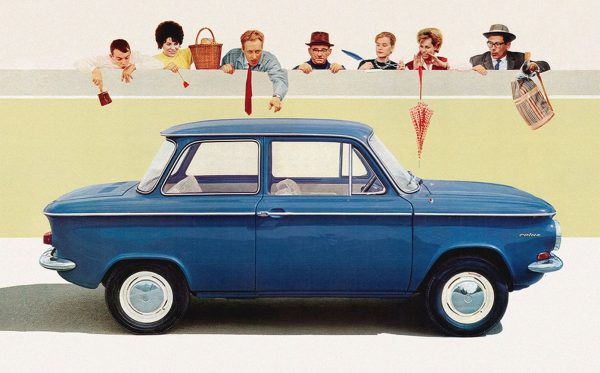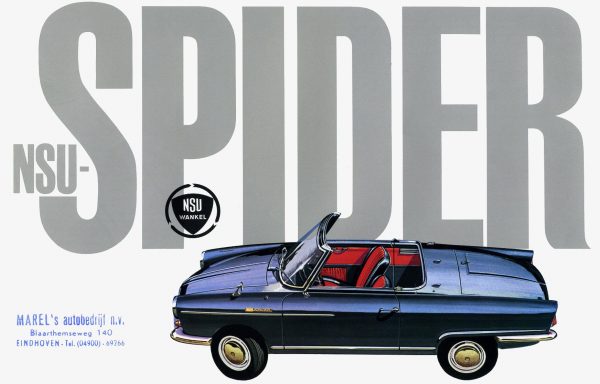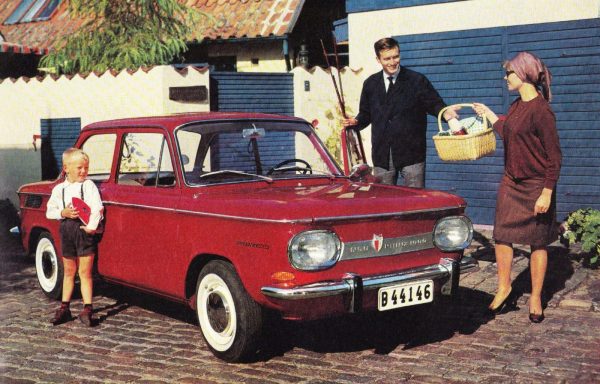NSU Prinz 4
The Little Giant of the 1960s
The NSU Prinz 4, launched in 1961, was a compact car that quickly gained popularity for its practical design and efficient performance. With its distinctive boxy shape and reliable engineering, the Prinz 4 became a symbol of post-war German ingenuity, offering an affordable yet robust option for the masses.
The NSU Prinz 4 was an important model in NSU’s lineup, introduced in 1961 as an upgrade to the original Prinz. It became one of the brand’s most successful models, known for its combination of compact design, practicality, and performance. The Prinz 4 was designed to meet the growing demand for small cars in the early 1960s, featuring a more powerful engine and improved interior comfort.
Historical Background
The NSU Prinz 4 was launched in 1961, positioned as a successor to the original Prinz. The car quickly gained popularity due to its affordability, practicality, and sporty appeal. The Prinz 4 was produced until 1973, with various updates and improvements made throughout its production run.
The Prinz 4 was designed as a response to the increasing competition in the small car market, particularly from other German manufacturers. It represented NSU’s commitment to innovation and quality, combining efficient engineering with a stylish design that appealed to a wide audience.
Technical Specifications
The NSU Prinz 4 featured several enhancements over its predecessor, including a more powerful engine and improved specifications. Here are the key specifications:
- Displacement: 996 cc
- Compression Ratio: Approximately 9.0:1
- HP Output: 50 hp at 5,500 rpm
- Torque Output: Approximately 8.5 kg/m at 4,000 rpm
- Transmission: 4-speed manual
- Length: 3,300 mm
- Width: 1,500 mm
- Height: 1,380 mm
- Weight: Approximately 680 kg
- Wheelbase: 2,200 mm
- 0-100 km/h: Approximately 14 seconds
- Top Speed: Around 135 km/h
Design and Mechanical Features
The NSU Prinz 4 was characterized by its compact design, efficient use of space, and functional features that catered to everyday driving needs.
- Compact and Practical Design:
- The Prinz 4 featured a hatchback design, allowing for increased cargo space and versatility compared to traditional sedans. This practicality made it popular among families and urban drivers.
- The car’s clean lines and rounded edges contributed to its modern appearance, appealing to consumers in the 1960s.
- Air-Cooled Inline-Four Engine:
- The Prinz 4 was equipped with a 996 cc air-cooled inline-four engine, delivering 50 hp. This engine provided a good balance of performance and fuel efficiency, making it suitable for both city driving and longer journeys.
- The air-cooled design simplified maintenance and reduced weight, aligning with NSU’s focus on practicality.
- Independent Suspension:
- The front suspension used independent suspension with coil springs, providing a comfortable ride and stable handling. The rear suspension utilized a swing axle, which was typical for compact cars of the time.
- This suspension setup contributed to a smooth driving experience, allowing for responsive handling on various road conditions.
- Interior Comfort and Features:
- The interior of the Prinz 4 was designed with practicality in mind, featuring comfortable seating for up to four passengers. The cabin layout was straightforward, with easy-to-read gauges and controls.
- The rear seat could be folded down to expand cargo space, enhancing the car’s versatility for different uses.
- Braking System:
- The Prinz 4 was equipped with drum brakes on all four wheels, which provided adequate stopping power for the vehicle’s weight and performance. While not as advanced as modern systems, they were suitable for the car’s intended use.
Driving Experience and Performance
The NSU Prinz 4 offered a spirited driving experience, appealing to drivers looking for an economical yet engaging small car. The combination of its lightweight design and capable engine allowed for good acceleration and maneuverability, making it ideal for urban environments.
The Prinz 4’s air-cooled engine provided smooth power delivery and a satisfying driving experience. It was easy to handle and responsive, making it enjoyable for both new and experienced drivers. While it was not a high-performance vehicle, it excelled in providing a fun and practical driving experience.
Legacy and Impact
The NSU Prinz 4 is regarded as one of NSU’s most successful models, contributing significantly to the company’s reputation for producing high-quality small cars. Its combination of compact size, practicality, and performance made it a popular choice among consumers during its production run.
The Prinz 4 helped establish NSU’s presence in the small car market and set the stage for future models. Its success also influenced the design and engineering of subsequent NSU vehicles, including the Prinz 1000 and later offerings.
Today, the NSU Prinz 4 is celebrated by collectors and enthusiasts for its classic design and historical significance in the automotive world. It represents a period of innovation and creativity in the small car segment, highlighting NSU’s commitment to producing vehicles that combined style, functionality, and performance. The Prinz 4 remains a cherished piece of automotive history, reflecting the spirit of the 1960s and the demand for compact cars that offered both practicality and driving enjoyment.




